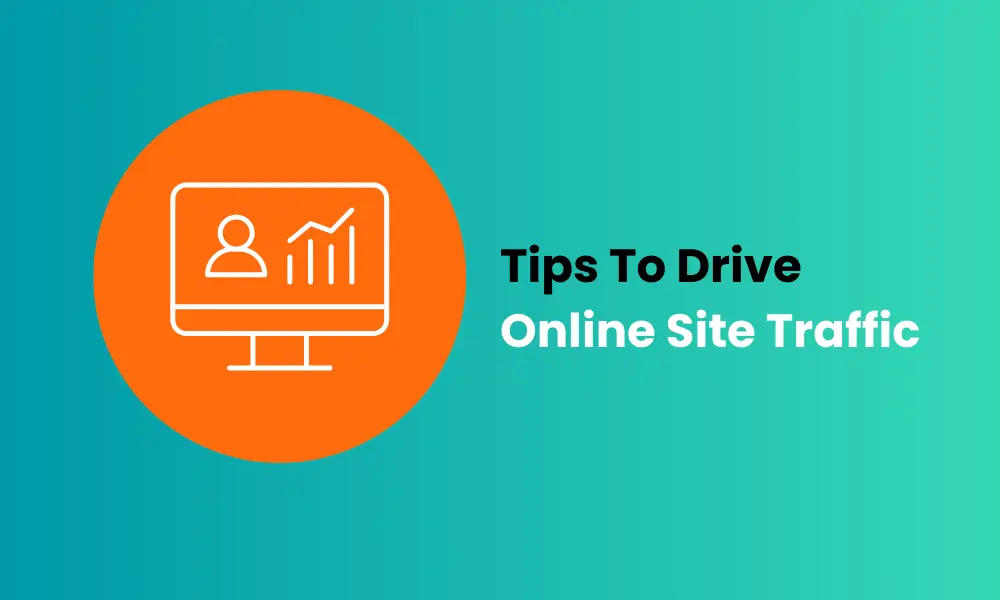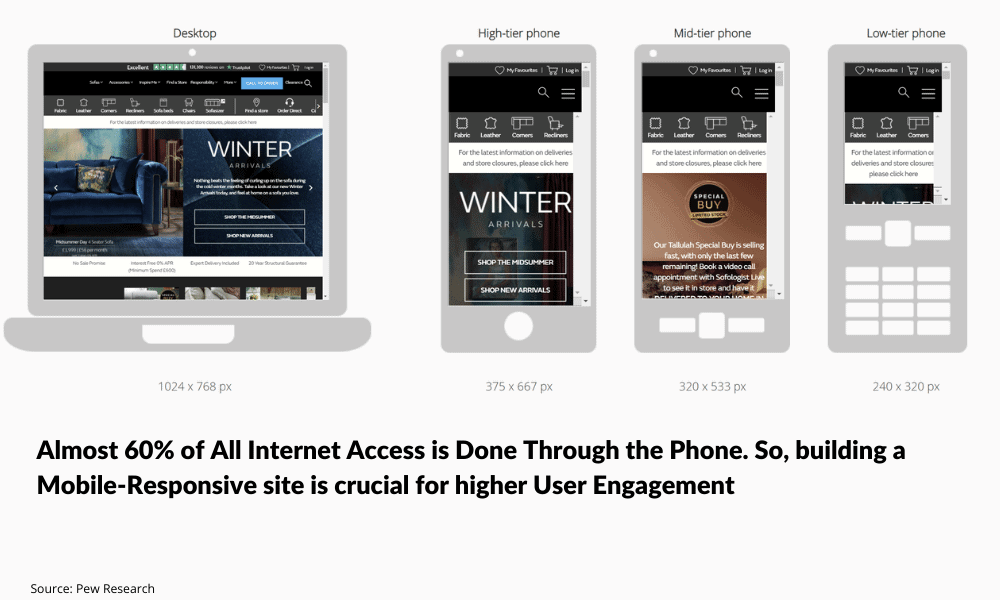
Top 7 Tips to Drive Traffic to Your Ecommerce Store
Table of Contents
With the surge in global digital buyers, there has never been a better time to start an online store.
According to an estimate by Oberlo, a drop-shipping brand, there will be 2.71 billion global digital buyers in 2024. The eCommerce landscape offers immense opportunities for businesses to grow and thrive.
This growing trend in eCommerce offers incredible opportunities to drive traffic to your website and increase your revenue.
What Should an Ecommerce Brand Do to Get Traffic?
In the vast online retail universe, traffic is the lifeblood of your brand’s success. Every shopper who comes to your eCommerce store is different. And there are a variety of ways you can bring in potential customers to your store.
But why is traffic so vital?
For conversion and analytics (the other key eCommerce tactics) to make a noteworthy difference, you need to drive quality traffic to your store first.
Discussed below are 7 simple yet hugely effective ways you can get free traffic to your website.
7 Tips To Drive Traffic To Your Website
Tip #1: Invest in SEO – On-Page SEO, Blog Content, Images and Links
On-page SEO helps your eCommerce store to drive more organic traffic by ranking higher, engaging shoppers, and also converting even casual shoppers.
A shopper typically begins their buying journey with a search (usually on Google). Before making a purchase, they do two things. They compare prices and features first. Next, they read product reviews. So, your on-page SEO needs to be perfect.
The other point I want to emphasise is blog posts are no longer an entertaining add-on. Your blog content can seem like a time suck. But it can deliver valuable product information to shoppers, gain their loyalty and build lasting relationships.
Image optimisation is another smart investment of your time. It can improve the page speed of your product pages tremendously.
Building links is another essential ecommerce SEO activity. It is also the most challenging and time-consuming activity by far. But you can simplify link building by adopting the simple techniques detailed in this eCommerce SEO Guide.

Tip #2: Leverage Social Media Platforms
The role of social media platforms as a selling tool is clearly growing.
In the eCommerce marketplace, Pinterest is much better than the other competing social networks. You can use the power of pins and boards of this visual platform to drive traffic to your eCommerce site and sell products. And unlike Amazon, Pinterest does not charge you subscription, referral and closing fees.
Instagram is another powerful visual platform to get free traffic to your website. This platform presents you with plenty of sales opportunities. More than 80% of Instagram’s active user base of over 1 billion discovers new products and services on the platform.
TikTok is the latest global phenomenon. Young people have downloaded this app billions of times. (Yes, billions of times is right.) Selling on TikTok offers you the chance to engage with younger generations.
Facebook Marketplace is yet another social media marketing platform you can leverage. It’s available in over 110 nations and charges you a low commission. The main feature of this platform is that if you already have an existing online store, you can create a product listing super quickly.

Tip #3: Capitalise on Social Media Advertising and PPC Advertising (Google and Bing Ads)
Social media advertising is becoming the staple of every eCommerce store. You need to integrate this form of advertising into your marketing mix to remain competitive in eCommerce. And it can be a game-changer.
Paid advertising on social channels is an effective way to target your potential customers. You can optimise your targeted marketing communication to drive more relevant traffic to your store. But remember, some paid advertising opportunities are more sophisticated than others.
PPC (Pay per click) advertising is indispensable for starting with eCommerce. This is because if you’re a new Business, depending on your product niche, it may take you close to a year to start seeing traction in Search Engine results through SEO Marketing. That’s where PPC bridges the gap in helping you drive traffic.
PPC ads are displayed mainly in three places – search engines, websites and social media networks. Since these ads target ready-to-buy shoppers, they may work very well for some eCommerce Businesses, by generating quick sales. Google Ads enable you to target and reach the right potential shoppers – not just casual shoppers – at the right time.
Do you think Google Ads are expensive? No worries. I’ll suggest a more cost-effective option.
Bing Ads!
The advantage of Bing Ads is that the competition is lower compared to Google. And low competition means the cost-per-click (CPC) for Bing Ads is lower than that of Google Ads.

Tip #4: Optimise Your Site Speed and Performance
It’s quite possible that scores of product images may be weighing down your site speed and performance. So, if you’re already getting some site traffic but that traffic isn’t converting, a poor user experience could be a plausible cause.
Among several factors that may lead to a less than optimal user experience on an eCommerce site, site speed is quite high on the list. Image optimisation techniques can decrease page load times and speed up your site significantly.
Learn more about the current state of your web pages first. Only then can you improve your site speed. Remember, a time delay can easily ruin your business. And this isn’t something you can fix overnight.
Top Tools to Test Web Page Speed:
Google PageSpeed Insights: Firstly, this tool analyses the content of your web page. It then generates suggestions to speed up that page.
GTmetrix: This free tool analyses your page’s speed performance first. It then provides actionable recommendations for improving your site speed.
Pingdom: This tool allows you to monitor the uptime, performance and interactions of your web pages for a better end-user experience.

Tip #5: Make Your Site Mobile Responsive
A mobile responsive design increases the amount of time that shoppers spend on your online store. It also ensures your search engine rankings shoot up.
The growing user base of smart devices means it is mandatory for your store to have a mobile responsive design. Otherwise, your store will fall off the search radar.
Mobile eCommerce (m-commerce) trends suggest that making your store mobile responsive is a game-changer. If you delay it, you stand to miss out on some easy profits.
You say, “Please stop. I understand all this stuff. But tell me how to make my store mobile responsive.”
Check how your store looks on mobile devices first. Next, fine-tune it for mobile viewing and shopping.
Refer to this detailed checklist to make your store mobile responsive.

Tip #6: Build an Affiliate Program to Drive Referral Traffic
Affiliate marketing is a crucial part of driving traffic to your eCommerce site.
An eCommerce affiliate program usually involves two parties: an eCommerce entrepreneur (advertiser) and an affiliate (publisher). The affiliate publisher (marketer) promotes your products/services in exchange for a commission.
The simplest way to build an affiliate program is to work with other business website owners. They might be influencers who publish content in your industry and review products/services.
An affiliate program enables you to leverage a website’s referral traffic, expertise and influence to generate sales for your store. You pay the publisher a commission only after a sale is completed.
The image below explains how affiliate marketing works:

Tip #7: Use Email Marketing (While Being GDPR Compliant)
Email marketing is a proven way to get free quality traffic to your website. I simply love this marketing tool. And the reason is so obvious.
You can directly reach your customers without having to rely on search engine rankings or social media algorithms. And emails also allow you to build a lasting relationship with your customers.
The conversion rate for emails is much higher than the conversion rate for social media or search. The two main advantages of email marketing are it is not only cost-effective, but you also own your email list.
Getting started in email marketing is easy. You can begin by setting up automated lifecycle emails such as Welcome emails, Cart Abandonment emails and Win-Back emails.

Request a Free Website Audit of Your Ecommerce Store
At Digital Chakra, we strive to maximise the impact of your marketing budget. We gain a clear understanding of your industry first. We then analyse the competitive landscape in your industry and evaluate your business goals.
Based on our findings, we design, implement and monitor the eCommerce SEO solutions for your store. This strategic approach allows us to serve your interests best.
If you’d like to claim a free audit, do get in touch with us. Please note that all SEO audits are conducted by experienced SEO Consultants, and employ important site health checks, using a mix of paid industry tools & manual analysis.


Sorry, the comment form is closed at this time.